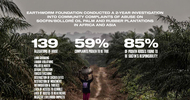With publication of the Land Matrix by ILC and partners, the inaccurate claims of a 2.8 million ha land deal between China’s ZTE International and the Government of DR Congo has once again returned from the dead. Apparently, shock stories like these have an everlasting appeal, regardless of the facts. I actually wrote the ILC about these false claims and made a posting in the Land Matrix, but, judging by the absence of a reaction and the post not being publicized, the Land Matrix is more about perpetuating the hype than developing an evidence-based tool.
That aside. So, once again, let us look at the facts surrounding ZTE so that we can once and for all put this one to rest.
The only field based research I know of (correct me if I am wrong), which the Land Matrix it appears has failed to identify, is that by Putzel and Kabuyaya (2011). According to their research, in 2011 ZTE had yet to receive land of any significant extent from the Department of Agriculture with whom they signed the “Convention Partenariat” in November 2007. This agreement does not make any specification of 2.8 million ha. Rather, Article 4 says (translated from French) that the Ministry will provide “at least 100,000 ha of arable land in more or less 4 concessions”. See the concerned page I took from the contract posted below. This is consistent with the 100,000 ha figure that have more recently circulated. Regardless, with an allocation of this sort not seeming to have yet come to fruition, any such figure cannot be labelled as a ‘land deal’.
What Putzel and Kabuyaya do show is that ZTE is active in the Congolese agricultural sector, though at a much smaller scale. At the time of their research, 256 ha of land had been acquired from a local chief in the Bateke Plateau, which is being developed, not as an oil palm, but as a maize farm. The produce was actually sold to the World Food Programme. Additionally, the Ministry of Agriculture allocated the 600 ha N’sele farm to ZTE for riziculture.
So, if we are to talk about a ZTE land deal in DR Congo, the evidence for now points to 856 ha.













